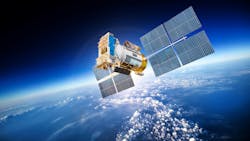Mitigating Satellite Drift: How Engineers Keep GPS and Comms from Falling Silent (Download)
If you think about it, space-based satellites are a pinnacle of human engineering. Above that, some are part of the Global Positioning System (GPS), winning 10 awards for that achievement in technology. Saving lives, guiding militaries, or just finding your way to a new restaurant, we all use it just about every day.
However, these satellites sometimes don't stay in place. This is a phenomenon called satellite drift, and it’s a big problem. There are many causes, including gravitational forces, solar radiation pressure, atmospheric drag at lower altitudes, and imperfections in the Earth's shape. With that said, will satellite drift render our GPS capabilities useless?
